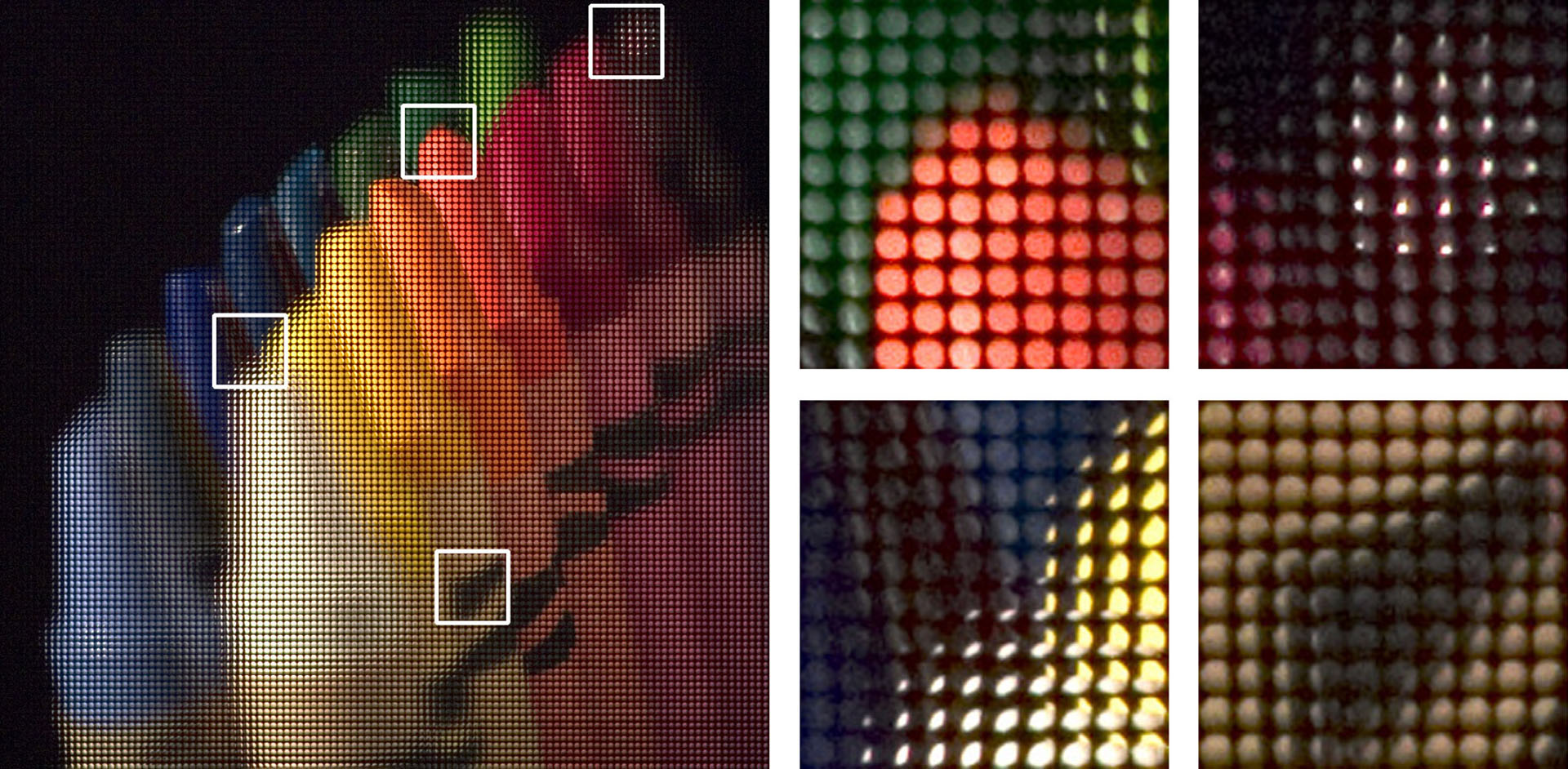“Fourier slice photography” by Ng
Conference:
Type(s):
Title:
- Fourier slice photography
Presenter(s)/Author(s):
Abstract:
This paper contributes to the theory of photograph formation from light fields. The main result is a theorem that, in the Fourier domain, a photograph formed by a full lens aperture is a 2D slice in the 4D light field. Photographs focused at different depths correspond to slices at different trajectories in the 4D space. The paper demonstrates the utility of this theorem in two different ways. First, the theorem is used to analyze the performance of digital refocusing, where one computes photographs focused at different depths from a single light field. The analysis shows in closed form that the sharpness of refocused photographs increases linearly with directional resolution. Second, the theorem yields a Fourier-domain algorithm for digital refocusing, where we extract the appropriate 2D slice of the light field’s Fourier transform, and perform an inverse 2D Fourier transform. This method is faster than previous approaches.
References:
1. Adelson, T., and Wang, J. Y. A. 1992. Single lens stereo with a plenoptic camera. IEEE Transactions on Pattern Analysis and Machine Intelligence 14, 2 (Feb), 99–106. Google ScholarDigital Library
2. Bracewell, R. N., Chang, K.-Y., Jha, A. K., and Wang, Y. H. 1993. Affine theorem for two-dimensional fourier transform. Electronics Letters 29, 304–309.Google ScholarCross Ref
3. Bracewell, R. N. 1956. Strip integration in radio astronomy. Aust. J. Phys. 9, 198–217.Google ScholarCross Ref
4. Bracewell, R. N. 1986. The Fourier Transform and Its Applications, 2nd Edition Revised. WCB / McGraw-Hill.Google Scholar
5. Chai, J., Tong, X., and Shum, H. 2000. Plenoptic sampling. In SIGGRAPH 00, 307–318. Google ScholarDigital Library
6. Deans, S. R. 1983. The Radon Transform and Some of Its Applications. Wiley-Interscience.Google Scholar
7. Frigo, M., and Johnson, S. G. 1998. FFTW: An adaptive software architecture for the FFT. In ICASSP conference proceedings, vol. 3, 1381–1384.Google Scholar
8. Gortler, S. J., Grzeszczuk, R., Szeliski, R., and Cohen, M. F. 1996. The Lumigraph. In SIGGRAPH 96, 43–54. Google ScholarDigital Library
9. Isaksen, A., McMillan, L., and Gortler, S. J. 2000. Dynamically reparameterized light fields. In SIGGRAPH 2000, 297–306. Google ScholarDigital Library
10. Ives, H. E. 1930. Parallax panoramagrams made with a large diameter lens. J. Opt. Soc. Amer, 20, 332–342.Google ScholarCross Ref
11. Jackson, J. I., Meyer, C. H., Nishimura, D. G., and Macovski, A. 1991. Selection of convolution function for fourier inversion using gridding. IEEE Transactions on Medical Imaging 10, 3, 473–478.Google ScholarCross Ref
12. Javidi, B., and Okano, F., Eds. 2002. Three-Dimensional Television, Video and Display Technologies. Springer-Verlag. Google ScholarDigital Library
13. Levoy, M., and Hanrahan, P. 1996. Light field rendering. In SIGGRAPH 96, 31–42. Google ScholarDigital Library
14. Levoy, M., Chen, B., Vaish, V., Horowitz, M., McDowall, I., and Bolas, M. 2004. Synthetic aperture confocal imaging. ACM Transactions on Graphics 23, 3. 822–831. Google ScholarDigital Library
15. Levoy, M. 1992. Volume rendering using the fourier projection-slice theorem. In Proceedings of Graphics Interface ’92, 61–69. Google ScholarDigital Library
16. Liang, Z.-P., and Munson, D. C. 1997. Partial Radon transforms. IEEE Transactions on Image Processing 6, 10 (Oct 1997), 1467–1469. Google ScholarDigital Library
17. Lippmann, G. 1908. La photographie intégrale. Comptes-Rendus, Académie des Sciences 146, 446–551.Google Scholar
18. Macovski, A. 1983. Medical Imaging Systems. Prentice Hall.Google Scholar
19. Malzbender, T. 1993. Fourier volume rendering. ACM Transactions on Graphics 12, 3, 233–250. Google ScholarDigital Library
20. Mitchell, D. P., and Netravali, A. N. 1998. Reconstruction filters in computer graphics. In SIGGRAPH 98, 221–228. Google ScholarDigital Library
21. Naemura, T., Yoshida, T., and Harashima, H. 2001. 3-D computer graphics based on integral photography. Optics Express 8, 2, 255–262.Google ScholarCross Ref
22. Ng, R., Levoy, M., Brédif, M., Duval, G., Horowitz, M., and Hanrahan, P. 2005. Light field photography with a hand-held plenoptic camera. Tech. Rep. CSTR 2005–02, Stanford Computer Science. http://graphics.stanford.edu/papers/lfcamera.Google Scholar
23. Okano, F., Arai, J., Hoshino, H., and Yuyama, I. 1999. Three-dimensional video system based on integral photography. Optical Engineering 38, 6 (June 1999), 1072–1077.Google ScholarCross Ref
24. Okoshi, T. 1976. Three-Dimensional Imaging Techniques. Acad. Press.Google Scholar
25. Stewart, J., Yu, J., Gortler, S. J., and McMillan, L. 2003. A new reconstruction filter for undersampled light fields. In Proceedings of the Eurographics Symposium on Rendering 2003, 150 — 156. Google ScholarDigital Library
26. Stroebel, L., Compton, J., Current, I., and Zakia, R. 1986. Photographic Materials and Processes. Focal Press.Google Scholar
27. Tyson, R. K. 1991. Principles of Adaptive Optics. Academic Press.Google Scholar
28. Vaish, V., Wilburn, B., Joshi, N., and Levoy, M. 2004. Using plane + parallax for calibrating dense camera arrays. In Proc. of CVPR, 2–9.Google Scholar
29. Wilburn, B., Joshi, N., Vaish, V., Talvala, E.-V., Antunez, E., Barth, A., Adams, A., Levoy, M., and Horowitz, M. 2005. High performance imaging using large camera arrays. To appear at SIGGRAPH 2005. Google ScholarDigital Library




